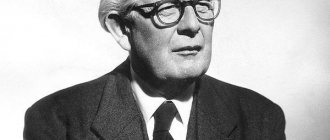We are all adults – we were once little children. And when we grow up, this child that we were in our past continues to live inside us.
And if our childhood was quite painful and difficult, then our inner child needs healing. Even though we have grown up, our wounded inner child continues to make itself felt. And ask us for help.
This article is about the inner child. And in it we will talk about who the inner child is. What types of inner child are within us. Why work with the inner child is needed, and how to do it. And how to love yourself through healing your inner child.
What is important to know about the inner child?
The inner child is a “part” of our personality. Which stores all our memories, feelings, needs, reactions, attitudes towards ourselves and others, patterns of behavior that we have preserved from our childhood.
When we react to some situations in the same way as we did in childhood. Then we react from our inner child.
If in childhood some of our important psychological needs were not satisfied, then our inner child “gets stuck” and cannot further grow and develop.
I do not believe!
Yes, sincerely and honestly, hand on heart - I don’t really trust psychologists of all stripes. And I have never attended any psychological training. And then the editorial task somehow strangely coincided with a spiritual impulse. And I signed up for the “Get Yourself Back” project.
She came - literally looking around and expecting a catch. But at first everything seemed to be decent. Very nice studio in the city center. Lots of vintage toys, some kind of fairy-tale atmosphere. A pleasant psychologist, whom I would describe for myself as “cozy.” And four more ladies - of different ages, but who also “lost” themselves and want to return to themselves. Although you can’t tell by their appearance - they are quite pleasant, beautiful, and sociable.
Types of inner child
Our inner child can be different. We can say that there are different parts of children in us, in our psyche. For example, we have:
- An adaptive child is a child who adapts to his parents, obeys their rules, and tries to meet their expectations. Also, an adaptive child can manifest itself in us as a rebellious child, when we, on the contrary, try to rebel against these rules, do the opposite.
- And a free child is a child who behaves the way he wants. Regardless of parental rules and expectations. He does not try to obey or rebel against his parents' demands. And you behave freely and naturally.
We can also have children of different ages inside us:
- An unborn child - which retains the memory of our intrauterine development.
- Inner baby.
- Young child (1-3 years).
- The child is a preschooler (4-6 years old).
- Child 7-10 years old.
- Inner teenager.
There may also be inner children within us:
- A happy child is a child whose needs are met. Which is allowed to manifest itself and develop naturally. Who is loved and supported.
- A traumatized, wounded inner child is a child who was born and formed as a result of the fact that our needs for love, acceptance or security were not met.
- A playful child is a child who loves to have fun, play, and act naturally and spontaneously. He loves to learn new things and is delighted with different adventures.
- Magical – very creative. Likes to fantasize and come up with something new and interesting. He is a dreamer.
- A feeling child is a child who experiences feelings and knows how to empathize with others. It is responsible for our capacity for affection and love.
- Angry - vindictive and vindictive. Tends to punish other people and get angry with them. He is responsible for our ability to defend ourselves.
- A forgotten inner child is a child with whom contact has been lost, who has been forgotten. A forgotten inner child can lead us as adults to crises, depression, and a feeling of meaninglessness and uselessness of our own lives.
The Wounded Inner Child and Relationship Trauma
The traumatized, wounded inner child is a part of us that carries the imprint of our psychological traumas.
Trauma is our psychological wound. This is our reaction to some event or to many similar events that our psyche could not cope with. And as a result, it was divided into a traumatized part (i.e., our wounded inner child) and a part of the protector, the persecutor.
Such a traumatic event could be:
- something extreme. For example, an attack, a fire, a war, someone’s murder, a natural disaster, etc. Then we develop a shock trauma.
- as well as many unpleasant, “softer” events, but recurring regularly. For example, psychological violence, violation of agreements on the part of the parent, lack of attention, rejection, non-acceptance of certain qualities, etc. As a result of such events, we develop developmental trauma or, in other words, relationship trauma.
Our traumatized inner child encourages us to experience again and again similar painful events that caused us to be traumatized. To finally do something differently about this event and heal. And another part of us, our inner defender, seeks to avoid such an event. Protect us from recurrence of trauma.
This inner protector, which protects us from repeating relationship trauma, can manifest itself through fear of intimacy. When we are afraid to let another person close to us or are afraid to enter into a relationship at all. Our fear of close relationships is formed precisely as a result of relationship trauma.
The healing of the inner child occurs through the healing of its “wounded part.” That is, through working with relationship trauma. And as a result of his healing, our ability to have close, trusting, loving relationships with other people increases.
It's me?!
Seeing the “fruits” of the stylist’s labor, I was confused. It’s not that I didn’t recognize myself, but it was somehow different from me. And not at all like that. And when the photographer and the stylist gave me some advice on how to sit, how to look, how to turn, at first I was irritated. It seemed to me that everything that was recommended did not suit me at all. Other people's poses. Other people's views. Alien movements. It's not me!
And then it seemed to hit me. And for the third time during this six-hour training, I completely lost control of what was happening. Surrendering to the will of professionals. I got up. She sat down. She turned around. Smiled. And - gradually - it was as if she was getting used to this new image. Into this new-old self.
How does the inner child manifest itself in a relationship?
Often our inner child in relationships manifests itself through some very strong emotional reactions. For example, when we become very scared. Or very sad and painful.
It can also manifest itself in us through the patterns of behavior that we used in childhood in relationships with our parents.
For example, a woman makes serious mistakes at work over and over again. Because of which her boss constantly scolds her. As a little girl, this woman behaved the same way with her mother. Who only paid attention to her when she did something wrong. And in order to receive at least negative attention from her mother, the girl deliberately made mistakes.
And having already matured, this woman unknowingly continues to receive attention from her boss (who even looks like her mother). Because she scolds her for her mistakes.
All that shortage of what we were “lacked” in childhood. We retain all this emotional “hunger” in ourselves into adulthood. And we unconsciously look for people with whom we can “play out this drama”, repeat this painful scenario. A scenario where we need something from another person, but he cannot or does not want to give it to us. Or he gives, but you have to “pay for it” very dearly.
How to understand at what age is the child inside a person?
Psychologists associate the age of the inner child with the time of receiving the most severe emotional childhood trauma or, conversely, with the most joyful event. When visiting a psychotherapist, a person finds this moment in his memory with the help of a specialist. If you need to determine your age yourself, then you should not immerse yourself in memories, but observe your own behavior and reactions.
The easiest way to figure out the question of age is for those people who are raising their own children. If, when a child reaches a certain number of years, an adult “begins to go crazy,” then it is at this age that the inner child is located. What does this mean? Loss of adequacy by an adult and demonstration of behavior that was completely unusual before.
For example, an adult may suddenly begin to show excessive demands and even aggression. Moreover, grabbing a belt, putting it in a corner, turning off the night light on principle, although the baby asks not to do this, refusing gifts and tasty little things is equally common for both men and women. Adults are unable to control themselves; it seems to them that they are beginning to hate their own child. Then people are tormented by remorse, shame, and are haunted by guilt. However, they cannot even ask for forgiveness from the baby, as if a switch switches in their head at the sight of a child. As a rule, this behavior goes away in about a year, but the baby does not forget about it. And when he grows up, his own inner child will be at exactly this age.
This is the behavior of those whose ego state is “sick” and requires healing. In other words, such reactions indicate a strong psychological trauma received in childhood, which forever remained in the subconscious as a component of the subpersonality. And when a real child of his own reaches the same age, he actually “rips the ring off the grenade.” It is almost impossible to cope with this condition on your own. Therefore, it makes sense to visit a psychotherapist, and not to cripple the soul of your baby by making a copy of your own from his future inner child.
If a person’s inner world consists of positive experience, and is not based on mental trauma, then his behavior also becomes inadequate, but only with a “+” sign. In other words, the adult begins to pamper his child, shower him with gifts, take him to attractions, and constantly buy the child all kinds of goodies and new things.
What about those people who don’t have children? You need to listen carefully to your own feelings that arise when you encounter children on the streets, in transport or in a store. For example, if children in wheelchairs cause inexplicable irritation, rage, and anger, it means that it was at that age that the person was injured. Of course, feelings such as tenderness and delight also indicate the age of the internal ego state.
You also need to be very careful about dreams that are repeated, and children are present in the plot. As a rule, such dreams are a manifestation of repressed memories, pictures from a forgotten past. At least, that’s what Dr. Sigmund Freud believed.
Why do you need to work with your inner child?
First, working with your inner child is important to make it easier to build loving relationships.
People who have a severely traumatized inner child most often use one of two strategies for dealing with it:
- They can “hide” their inner child from themselves, i.e. “suppress” it within yourself, not allowing it to show up or manifest itself. Or “hide” only from other people, not allowing others to see themselves as such - vulnerable, needy, sensitive and loving. If we do not allow our inner child to express itself in relationships with other people, then it is difficult for us to become attached and close to another person. We become unavailable to other people, emotionally closed.
- Or people may, on the contrary, unconsciously shift all the care of their “inner child” to other people in the relationship. At the same time, without even checking how safe and reliable the other person is to come so close to them. With such a strategy, firstly, there is a very high risk of “getting hurt”, being seriously injured in a relationship. Become attached to a person with whom it is unsafe to be in a relationship. And secondly, it can be difficult for other people to take care of us all the time. Moreover, without receiving anything in return. After all, adult relationships are based on equal exchange. And when there is no balance between “taking” and “giving,” then the relationship between two adults turns into a “parent-child” scenario, becoming unhealthy. Either the person gets tired of taking care of us all the time and moves away or breaks up with us.
Both of these strategies interfere with creating a happy relationship. And to replace these strategies, you need to work with your inner child, heal it and learn to give it love, security, care and attention.
Good contact with the inner child helps us to rely on ourselves, to be more self-sufficient, and not to become heavily dependent on other people. Helps you recognize your desires and act in accordance with them.
It also helps us to be creative. Difficulties with creativity in a person arise precisely because a person suppresses his inner child and does not allow him to manifest himself.
The girl inside every woman
Larisa Renard and many other authors identify 4 incarnations of a woman: Mistress, Girl, Bitch (or Queen) and Lover. All these hypostases are needed, all are important. But the Girl is often considered the basis. And if she is downtrodden and traumatized, then developing everything else is almost pointless.
A girl is the ability to be alive, sincere, spontaneous. The ability to rejoice like a child. Live life to the fullest, look at the world with open eyes. Be cheerful, open, inquisitive. And also trusting, mischievous, sympathetic.
The incarnation of a Girl is especially important when you are next to your husband. The girl knows how to admire, sincerely thank and obey. And if you don’t know how to squeal with delight at the sight of a new bouquet of flowers and sincerely admire even the small exploits of a man, you need to reveal the qualities of a girl in yourself.
Of course, there is also a shadow side to this hypostasis. Capricious, frivolous, touchy. Women who are naturally highly developed girls can be obnoxious. After all, this is only one of four hypostases. And we need to work on its positive aspects, and not let things take their course.
Loving yourself means loving your inner child.
If you feel that you don't love yourself or don't love yourself enough, then you need to work with your attitude towards your inner child.
Most likely, you don’t love yourself because you have adopted someone else’s negative attitude towards yourself. Someone significant to you as a child treated you in a way that made you feel like they didn't love you. And in childhood, we put the external inside ourselves, absorbing it like a sponge. And you also absorbed someone’s unloving attitude towards yourself, and learned to treat yourself in the same way.
And now, as an adult, you continue to treat yourself the same way, i.e. to your inner child.
"Shabby" me
In principle, there was no need to talk out loud about what I saw. But I didn’t just come to sit and watch—I actually needed help. However, the difficulties with myself became clear even before my story - when I had to choose a toy. Your second self. I was not attracted by luxurious dolls, cute animals, or a killer rocking horse. Without hesitation, I chose something touchingly scary and shabby. And I realized that this was me. So much so that I simply didn’t want to let go of the toy.
However, I also told about my vision. And, thanks to the psychologist’s leading questions, I understood why my inner girl is like this. Disabled and downtrodden. Because by this moment I had forbidden myself everything. Dream and look around. Say what I think. Eat what I want. Wear what you like. On all sides there is a palisade of “not allowed.” Invented by me myself.
Develop a loving inner parent
Healing of the inner child occurs through a loving attitude towards him. To learn to treat him with love, it is important to develop a loving and caring inner parent. In return for that critical, non-accepting, rejecting parent who is now inside you.
This process is not quick. You can't just do something today and wake up tomorrow with a loving inner parent. Long-term regular work is required for this. But if you really carry it out, then you won’t even notice how you will become more stable and filled with love.
Live by feelings
When the stylist-makeup artist appeared who was supposed to transform us, I was no longer quite me. After I was not afraid to sit with my eyes closed in front of essentially strangers, something changed. And I “let go” of control over the situation.
Lena the stylist sat with us for a while - looked, listened, asked questions. And then she took out her “magic suitcase”. By lot, I was to be the first to be transformed.
I couldn’t even imagine that you could relax while your makeup was being done, your hair was being done, and your accessories were being selected. But the fact is that I was absolutely calm and relaxed. Moreover, if Lena hadn’t told me to look in the mirror, I wouldn’t have looked. But it was necessary to look. To feel new - like this. However, not new - well-forgotten old, or rather. Living by feelings. Strong, but fragile. Infinitely tender. Loving yourself and loved by others. This is exactly how my image was “positioned”.
Working with the inner child. Exercises
First exercise To begin, do this work with your unborn inner child. To heal the traumas you suffered during the prenatal period.
- Imagine yourself as an adult, as a mother to your inner child. And that within you is your unborn inner child. It is important to imagine not your real mother, but yourself, as a mother to your inner child. Feel your warmth, love and tenderness for this child who is inside you. Stay with these feelings for a while.
- Then feel yourself as this unborn child. And feel love and tenderness for your mother with your whole body. Feel that you love your mother (not your real mother, but yourself, as your own mother), and your mother loves you. Feed yourself on these feelings.
- As you observe this communication between mother and inner child, periodically change your role. Either feel like a mother or a child. And feed off the love they feel for each other.
Repeat this exercise every day for a month. And then take the next age period - infancy. Repeat this exercise with your inner baby. And do it every day for a month. And then repeat everything with your inner child of early childhood, preschool age, elementary school age and your inner teenager.
Second exercise
In order for your inner child to feel his worth and feel worthy and good, it is important to praise him. And do it regularly.
For this you can keep a notebook. In which, every day, write down 5-15 points for which you praise your inner child today. It is important to repeat this exercise every day for at least a month. It is important to do this regularly and not miss days, so that you learn to praise yourself automatically, so that you develop such a skill.
Bystritskaya or Doronina
The photos turned out. Unusually delightful. All my social networks literally exploded with enthusiastic comments. Beautiful, magnificent, deep, feminine. Royal, enchanting, fantastic. The spitting image of young Doronina. Or young Bystritskaya.
I was even confused by so many compliments. I wasn’t embarrassed, because just a few days after the training, changes began. You know, like in Wilde's The Picture of Dorian Gray, only in reverse. There, everything bad a person did was reflected in his portrait. And for me, my magnificent photos began to give me strength. Self confidence. An unusual “royality” for me.
Of course, everything is gradual. But I’m no longer nervous to the point of tears waiting to see if my husband will like my new dress. And I don’t regret buying something expensive and nice for myself. And when my inner girl wants a cake, I buy it. Instead of convincing her and yourself that spinach soup is much healthier.
Svetlana Ladeyshchikova, psychologist, author of the photo training “Get Yourself Back” (svetlanahelp.ru):
“There are moments in every woman’s life when she stops believing in herself, her beauty and femininity. And it is very important that you find someone who will help you quickly overcome this period. This is exactly the goal we set for ourselves in our project.
This is primarily a technique that helps to reveal hidden beauty. This is the creation of an image that best reflects the inner world of a woman. Paradoxically, we don’t know ourselves well. To restore a woman’s confidence in her attractiveness, to better understand her inner self - this is our greatest task.
That's why we work as a team. A psychologist helps you recognize your archetype and meet your real self. Remove internal clamps, relax and release energy.
A session with a stylist allows you to identify and highlight a woman’s individuality and beauty. The photographer finds exactly your ideal angle. And he takes photos in which you are the real you. Which was simply forgotten for some reason. And to which the time has come to return.
Healing the inner child
- If you have never worked with your inner child before, then first you need to get to know him. To do this, you can write him a letter. Or imagine that he is sitting in front of you. And looking into his eyes or in a letter, greet him and tell him everything you want to say.
- Find out from your inner child what he needs, what he wants. And find a way to give it to him. It is important that this is not a one-time job, but constant and regular.
- Analyze your relationships with people and determine which needs you most often cannot satisfy in your relationships. But you want it. Maybe it's the need for a stable and secure relationship. Or the need for recognition and praise. Or the need for warm touches and hugs. Or the need for freedom. Or the need for attention.
To change your relationships, make them happier and more nourishing, it is important to learn how to give this to yourself, to satisfy these needs for yourself. It is important to learn to notice and find people who are able, willing and able to give you what you need. Learn to talk to others about your needs and ask for them. Learn to satisfy these needs from other people yourself. And also learn to build such relationships with them that other people want to do something nice for you.
- Sometimes organize holidays for your inner child. When you do something for him all day long, pamper him and make him happy. For example, buy yourself balloons, treat yourself to cotton candy, sing yourself a lullaby, ride yourself on a carousel or swing. Give him a doll or a car, play with him and other children, watch your favorite cartoon. Take yourself to a water park, circus or dolphinarium, do something creative. Embrace yourself or the image of your inner child in your imagination. If as a child you dreamed of something, and on this day you can make this dream come true.
- Watch the feature film “Big Little Me” and do similar work with your inner child, as the heroine of the film did.
It is better to work with the inner child (and especially with its “wounded part”) together with a psychologist. If you want to learn to be more loving with yourself. And become more self-sufficient, happier and more stable in relationships through working with your inner child. Then contact me for personal consultations.
How childhood experiences create difficulties for adults
When we talk about the manifestations of childhood experiences, which, along with genetic characteristics, determine our essence and self-esteem, we are talking about a part of the personality defined in psychology as the “inner child.” The inner child is, in a way, the sum of our childhood experiences, both good and bad, which we learned through our parents and other close people.
Most of these memories are in the unconscious area. Therefore, it can be argued that the inner child is an essential part of the unconscious. These are our fears, needs and experiences that we experienced as children. But these are all positive impressions from the past too.
And yet, first of all, negative manifestations of childhood experiences create difficulties in adult life. Because the child in us tries to do everything possible so that the insults and traumas inflicted on him in childhood do not happen again in his life.
On a conscious level, we think of ourselves as independent adults in control of our lives. However, on an unconscious level, our inner child has a fairly tangible influence on our worldview, feelings, thoughts and actions. Sometimes even much more than the mind. It has been scientifically proven that the subconscious is a powerful mental apparatus that controls 80-90 percent of our actions and experiences.
Even those people who predominantly felt happy in childhood and formed primary trust are not without life’s difficulties and problems. And their inner child experienced certain traumas, because ideal parents and childhood do not exist in principle.
Along with positive impressions, even relatively happy children adopt various negative experiences of their parents, which can subsequently become the cause of life problems. They can live by the principle: “Better a bird in the hand than a pie in the sky.”
In any case, negative manifestations from childhood impose restrictions on our development and can interfere with relationships with other people.
Ultimately, the statement will be true for each of us: only when we get to know and make friends with our inner child will we be able to recognize what traumas and experiences we have within ourselves.










